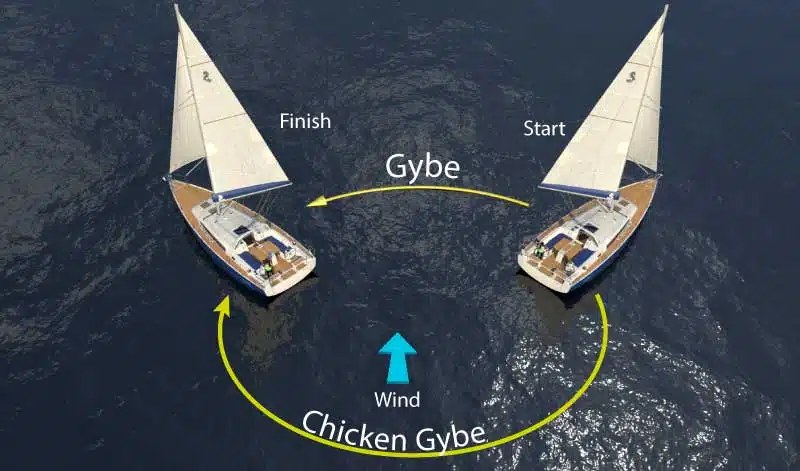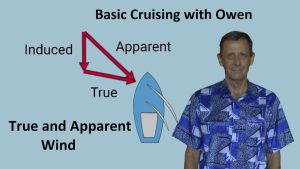Have you ever found yourself pondering the intricacies of maneuvering a sailboat during a jibe, wondering how to maintain a witty and offbeat perspective reminiscent of a David Sedaris essay? In navigating the complex yet entertaining world of sailboat jibing, we can find parallels to the idiosyncratic storytelling style that Sedaris is known for. This exploration will not only give insights into technical sailing techniques but will also attempt to infuse your sailing experience with the same humor and wit that Sedaris brings to his narratives.

The Art of Sailboat Jibing: Technical Foundation and Satirical Undertones
Before we can appreciate the humor in the situation, it’s essential to grasp the technical aspects of jibing. Jibing, or gybing, is a sailing maneuver that involves turning the stern of the boat through the wind. Unlike tacking, which turns the bow into the wind, a jibe turns the rear. This can be a delicate procedure, as improper execution might lead to the boom swinging violently across the deck, a situation best avoided unless you enjoy slapstick comedy at your expense.
Understanding the Mechanics: The Serious Side of Comedy
In the strictest sense, a jibe involves altering the sail’s angle relative to the wind as your vessel changes direction. The sailboat helmsman, akin to a conductor leading a symphony, must synchronize the crew’s efforts to smoothly direct the boom’s motion from one side of the boat to the other. This coordination avoids abrupt movements that could either harm the crew or the boat’s equipment. So, how does a helmsman ensure a perfect jibe while adopting a posture worthy of a David Sedaris character?
Steps to Perform a Seamless Jibe
- Preparation: As with crafting a narrative, preparation is key. Prior to jibing, ensure all crew members are aware of the impending maneuver. In Sedaris’ world, this announcement might include an anecdote-worthy quip about past nautical failings.
- Steady the Helm: Maintaining an even course as you prepare to turn is vital. The metaphorical equivalent might be Sedaris trying to keep a straight face while recounting tales of his eccentric family.
- Trim the Sails: The crew should bring the sails closer to the centerline to reduce excessive force on the boom. This process is much like Sedaris editing his essays for maximum comedic impact while avoiding unnecessary windbags.
- Control the Boom: As the boat turns and the wind shifts, the helmsman’s timing must be impeccable, releasing and controlling the sheets to allow the sails to fill on the new side. Imagine Sedaris artfully guiding the punchline of a humorous story; timing is everything.
- Adjust the Helm Direction: Finish the jibe by steering the helm onto the new course. In Sedaris’ style, this would be analogous to bringing a story full circle with a satisfying, laughter-inducing conclusion.
For an illustrative perspective, consider those many family outings or vacations that Sedaris describes, where the logistics of moving from one place to the next were tangled in humorous misadventure yet always resolved with a touch of grace and mirth.
Avoiding Catastrophes in Jibing: Humorous Mishaps and Learning Curves
Every sailor admitted to having botched a maneuver or two, much like how Sedaris unabashedly shares tales of his personal blunders. Risks involved in jibing include unintended gybes, where an unanticipated wind shift sends the boom slicing across the deck, exerting forces better left out of real-life comedy sketches.
Common Mistakes and the Sedaris Lens
- Poor Communication: Consider how Sedaris might describe a chaotic family dinner — voices clashing, orders misunderstood. Effective communication is essential for a successful jibe.
- Timing Misjudgments: Just as Sedaris would not abandon a punchline prematurely, a helmsman should not initiate a jibe before the sail’s readiness.
- Inadequate Sail Trim: Poorly positioned sails can spell disaster, much like an ill-fitted costume in a stand-up routine which draws more attention than the act itself.
The humor here is anthropomorphizing these mistakes. An unintended gybe might become a character in a Sedaris essay — a well-meaning but clumsy uncle at a family gathering, whose unpredictable antics bring laughter despite their disruptive potential.

The Sedaris Philosophy: Infusing Humor into Nautical Practices
In navigating sailboat activities, particularly complex ones like jibing, adopting Sedaris’ unique storytelling style can heighten the experience. His essays often begin with seemingly trivial situations but evolve into profound commentary on human nature through humor.
The Role of Observational Humor
Much like Sedaris finds humor in the mundane, a sailor can draw similar amusement from the dynamics onboard. The strained communication during a botched jibe, for example, echoes Sedaris’ intricate portrayals of familial exchanges fraught with both tension and affection.
Crafting Your Sailing Narrative
How can you apply Sedaris’ storytelling technique to your nautical pursuits? Try chronicling each journey with the same attention to character and story arc he uses. Whether your companions are stoic veterans or bumbling novices, there’s fertile ground for humor in the shared experience of tackling the elements.
Consider how Sedaris might recount a trip:
- The Dramatic Setup: Set the scene with your destination and the weather conditions, perhaps inflating them for comedic effect.
- The Characters: Identify and exaggerate each crew member’s quirks, much like Sedaris’ acute observations of personality traits.
- The Climax: Capture the jibe moment with all its potential for drama and hilarity — the overzealous crew member hauling in the sheet like Hercules or the helmsman enhancing the urgency with theatrical cries.
- The Resolution: Bring the anecdote to its satisfying, tongue-in-cheek closure, reflecting on what was learned or not learned, with a wry smile.

Conclusion: Embracing Humor on the High Seas
Sailing and storytelling demand a blend of skill, intuition, and a hearty sense of humor. In mastering the art of jibing, you face elements beyond control, much like the characters and scenarios authored by Sedaris. Embrace each moment’s unpredictability, and let the inevitable surprises fuel your inner narrator as if Sedaris himself were your sailing companion, commenting dryly at the ready. Consider your sailing logs not merely as technical reports but as chapters in a broader comedic memoir. In doing so, you may find yourself more prepared for each turbulent maneuver and more appreciative of the subtle humor life at sea affords.
Ultimately, capturing your experiences through this lens might not only improve your self-awareness as a sailor but also give you the means to entertain and engage others — a narrative achievement worthy of the Sedaris Method.






